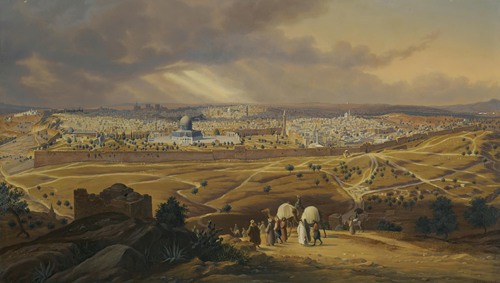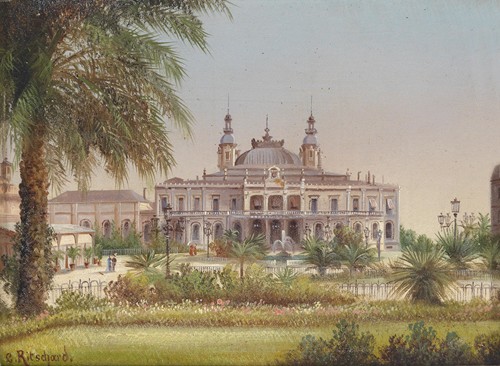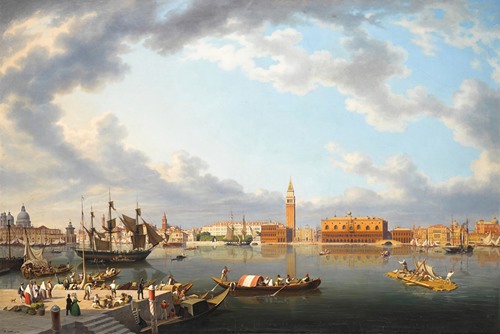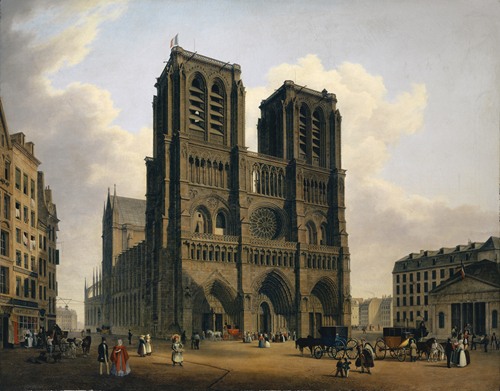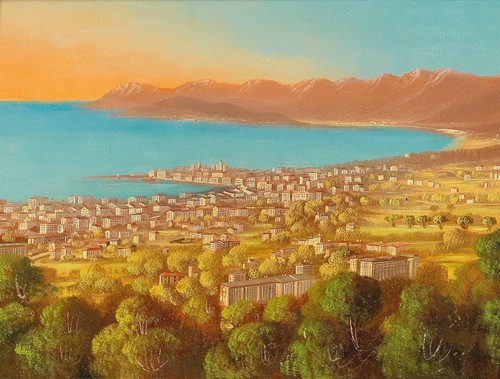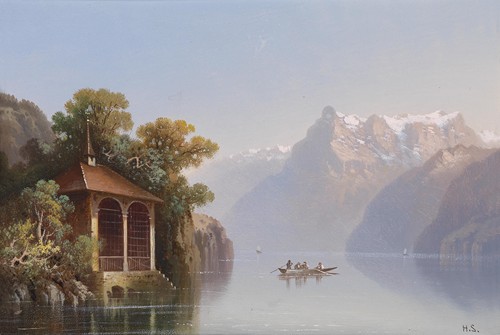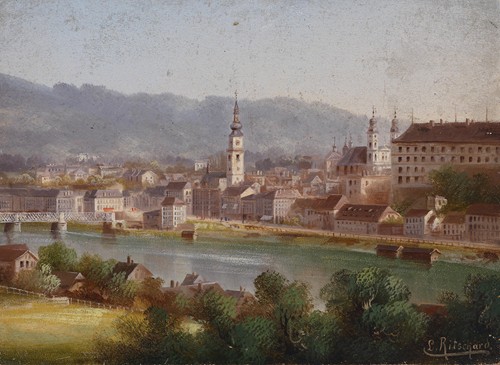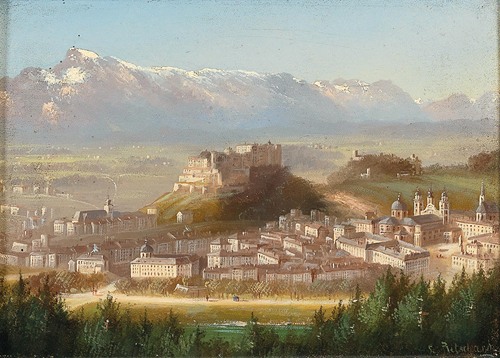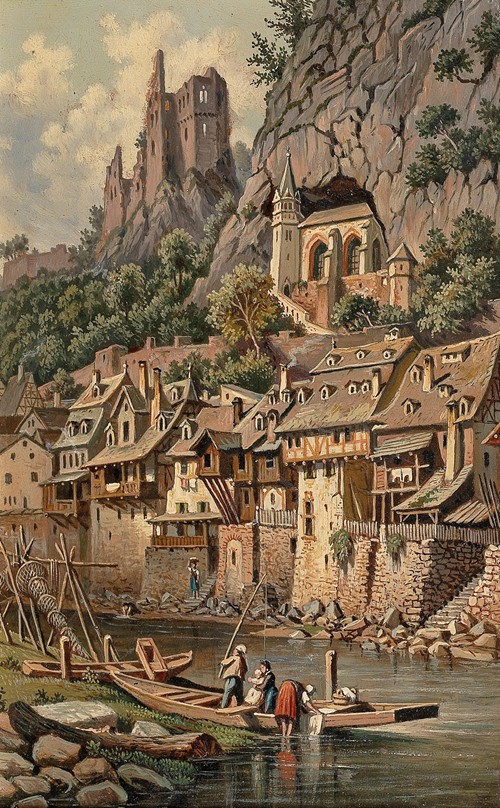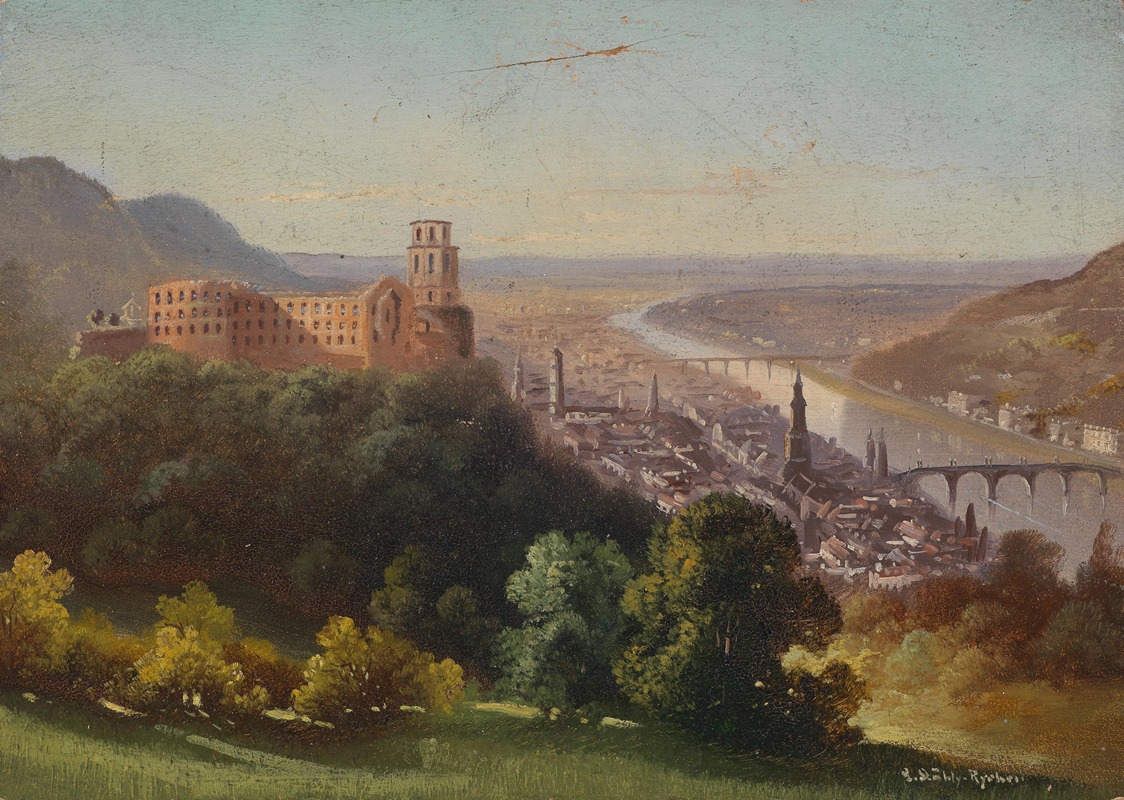
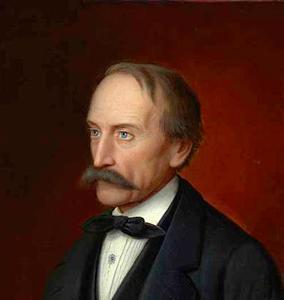
Hubert Sattler was an Austrian landscape painter who worked under the pseudonyms Louis Ritschard, E. Grossen, and Gottfried Stähly-Rychen.
Hubert Sattler was born in Salzburg; his father, Johann Michael Sattler, was also a landscape painter and created the Sattler Panorama of Salzburg in 1825–29. Hubert donated it and more than 300 of his own works to the city in 1870; the panorama is on permanent display in the Panorama Museum inside the Salzburg Museum, together with a rotating exhibit drawn from approximately 150 of his cosmoramas held by the museum.
Sattler toured with his father and first learnt drawing and painting from him, then attended the Academy of Fine Arts in Vienna at the age of 12, and his father worked with him on many of his early works.
His work is characterised by a high level of detail, in which they were displayed under lights in a dark room to customers looking through an aperture and often a magnifying lens. He painted landscapes in many European countries and also the Near East and Latin America, including views of both natural vistas and cities. His views were unusually accurate and up to date; he went on painting expeditions and then worked at home from his own detailed studies and from photographs, while many previous cosmoramas were based on old engravings. On her 1842 journey to the Near East, Ida Pfeiffer of Vienna met him and travelled with him for a while; in her published diary, she recorded how he was stoned by local people while sketching in Damascus. He exhibited his cosmoramas in many countries including in North America, travelling with a specially made temporary building. Late in life he spent many years in Vienna.
Sattler's son, also Hubert Sattler, was an ophthalmologist.
He died in Vienna and is buried in Salzburg in an honorary grave together with his father. The Hubert-Sattler-Gasse in the Neustadt area of Salzburg was named in his honour.
